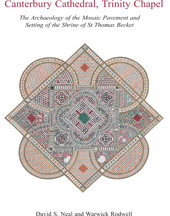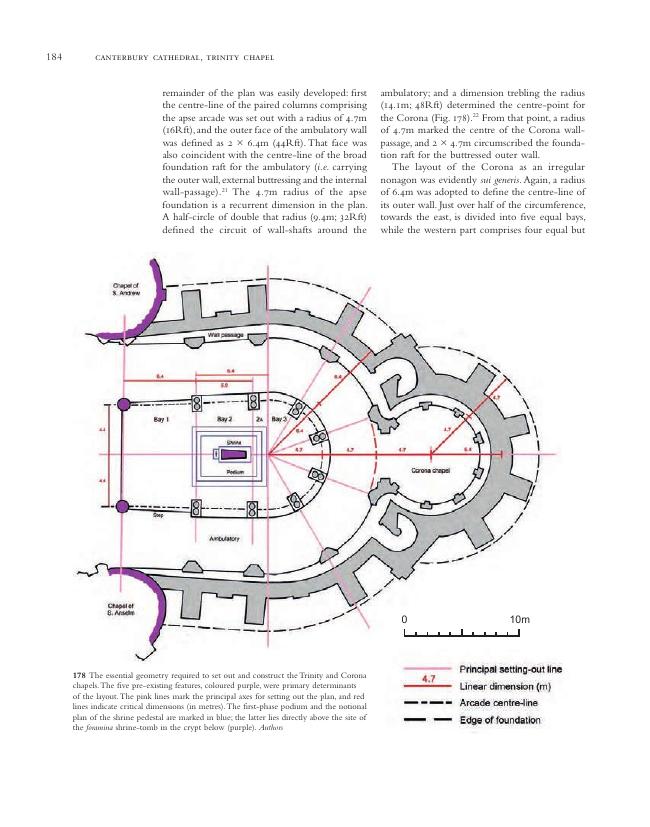Canterbury Cathedral, Trinity Chapel : The Archaeology of the Mosaic Pavement and Setting of the Shrine of St Thomas Becket
416 p.
Canterbury Cathedral possesses a unique marble mosaic pavement, dating from the early twelfth century, which has long intrigued scholars and been the subject of speculation and debate. It forms part of the floor of the Trinity chapel, adjacent to the site where the shrine of St Thomas Becket stood, prior to the Reformation. Since the mosaic is older than the chapel itself and partly destroyed a pavement of figurative roundels, laid c. 1215, it must have been moved here from elsewhere in the cathedral. This volume explores the history and archaeology of the Trinity chapel, the pavement and the physical remains of the cult of Becket, based largely on hitherto unrecorded and unpublished evidence.In the early twelfth century, Archbishop Anselm rebuilt the eastern arm of the cathedral, introducing architectural elements from his native Italy, and these included a magnificent mosaic pavement, composed of the most expensive marbles, which lay in front of the high altar. In 1170, Archbishop Becket was murdered in the
cathedral, and his body rested overnight on the pavement before being buried in the crypt. Thomas was immediately revered as a martyr, and in 1173 was canonized by the pope; a simple shrine was erected over his tomb. In the following year, a fire (arson) destroyed the eastern arm of the cathedral, precipitating the construction of the present Trinity and Corona chapels, wherein St Thomas's remains were enshrined.After decades of delay and political strife, the enshrinement took place in 1220, in the presence of Henry III. The shrine comprised a great marble table, supported on six clusters of columns. On top of the table was a marble sarcophagus containing the saint's body in an iron-bound timber coffin, over which stood the sumptuous feretory, a gabled timber roof', plated with sheets of gold and adorned with jewels. East of the shrine lies the small Corona chapel in which a fragment of Becket's skull was separately encased in a head-shrine', and to the west a large area was paved with forty-eight figurativ.
e stone roundels, created by French artisans. All around, stained-glass windows display the early miracles of Becket.The layout of the Trinity chapel underwent transmutations, first around 1230, when the mosaic pavement was taken up from the old presbytery, reduced in size and relaid in front of Becket's shrine, where is it today. Second, the chapel was reordered in c. 1290, when the podium carrying the shrine was enlarged and the paving around it reconfigured. Medieval tombs were now being installed in the chapels, including those of the Black Prince and Henry IV. The end came in 1538, when Henry VIII ordered the thorough destruction of Becket's shrines, but a great deal of archaeological evidence remained in the floors, walls and a few surviving fragments of the shrines, all now recorded and discussed in this volume for the first time. [Publisher's text].
Special access authorizations may apply; please contact us for further information.
-
Informazioni
ISBN: 9781789258431



